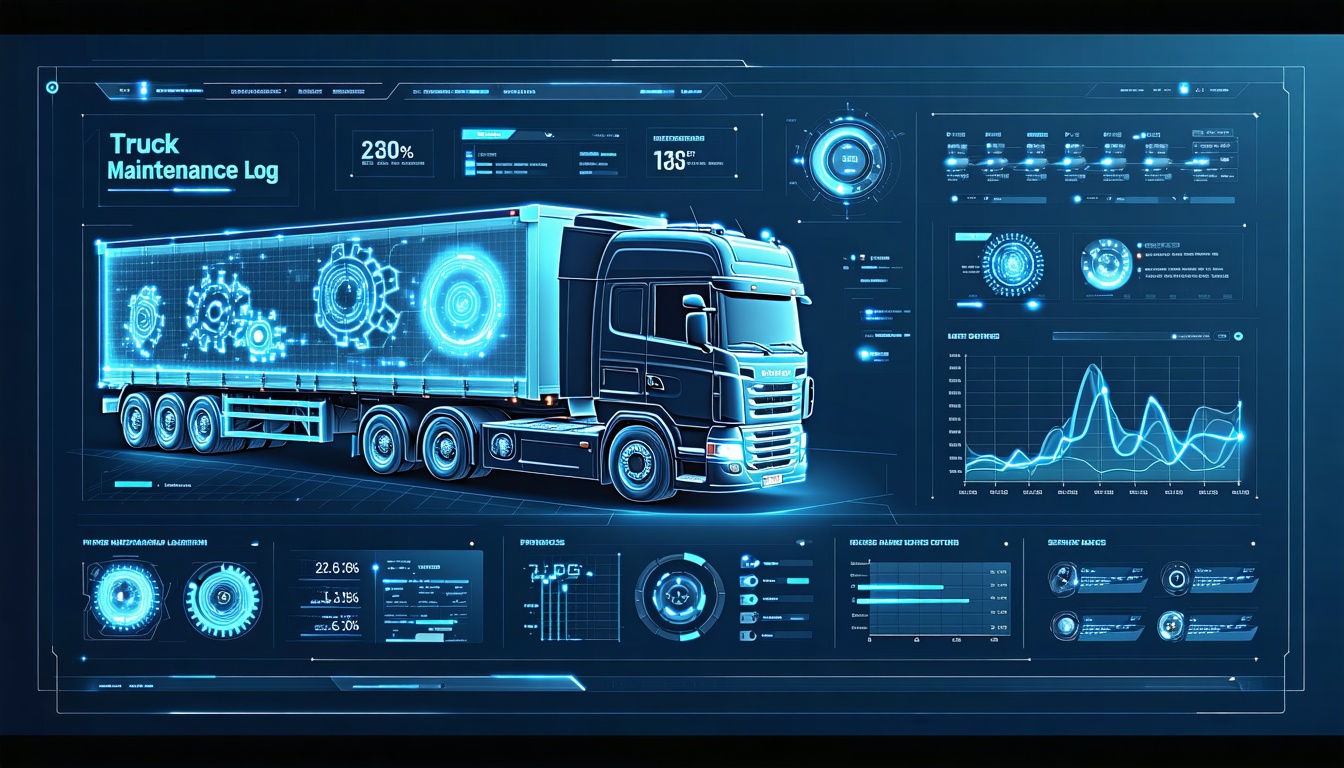Maintenance Requirements Overview
A truck maintenance log serves as a foundational component of a robust fleet management strategy. By documenting inspections, repairs, and preventive services, these records support operational efficiency and form the basis of compliance with federal and state regulations. Under Federal Motor Carrier Safety Administration rules, carriers must maintain detailed logs for each vehicle they own or lease.
FMCSA Recordkeeping Standards
The FMCSA mandates that maintenance programs include documentation of all work performed, such as inspections, repairs, service schedules, and maintenance checklists. Detailed logs enable organizations to monitor vehicle health, anticipate component failures, and plan strategic maintenance initiatives. Comprehensive recordkeeping is also critical during audits or investigations, when FMCSA officials assess program adequacy by reviewing maintenance-related activities (J. J. Keller & Associates).
Retention And Audit Requirements
Carriers must retain maintenance records for at least one year at the location where vehicles are housed or serviced. After a truck leaves a fleet—whether through sale or lease return—records must be preserved for an additional six months (FMCSA). Passenger carriers also face specific requirements, including inspecting emergency exits, door markings, and push-out windows every 90 days. Failure to meet these retention and audit standards can result in substantial fines, legal action, and operational downtime.
Leveraging Digital Truck Logs
Transitioning from paper-based logs or basic spreadsheets to a dedicated digital system can transform maintenance management. Digital truck logs offer enhanced accuracy, automated workflows, and real-time insights that support proactive decision-making.
Accuracy And Reliability
Manual logs are prone to transcription errors, illegible handwriting, and lost documentation. Digital platforms eliminate these issues by capturing data at the source, often through mobile apps or integrated telematics. As a result, organizations benefit from consistent, verifiable records that stand up to regulatory scrutiny (RapidWorks).
Real-Time Tracking And Analysis
Modern software solutions integrate with telematics sensors to provide continuous updates on engine performance, brake wear, fluid levels, and more. IoT-enabled platforms analyze this data to trigger alerts when components approach predefined thresholds, reducing unplanned downtime and supporting a shift toward predictive maintenance (Fleet Command). For a deeper look at how these systems work together, see our guide on how do vehicle trackers work.
Cost Savings And Efficiency
Digitized logs streamline scheduling by automatically generating service reminders based on mileage or calendar intervals. This approach drives down labor costs and parts expenses by ensuring timely interventions before failures occur. According to the US Department of Energy, regular maintenance can improve fuel efficiency by up to 4.1%, translating to significant savings across large fleets (Simply Fleet).
Designing A Compliant Log System
Developing a system that meets regulatory requirements and operational goals involves carefully selecting data fields, integrating with existing systems, and automating workflows to reduce manual effort.
Essential Data Fields
A compliant truck maintenance log should capture:
- Date and time of service
- Vehicle identification and mileage
- Description of inspection or repair
- Parts used and technician details
- Next scheduled maintenance interval
- Cost breakdown and invoice attachments
These data points provide a complete audit trail and support cost analysis for budgeting purposes.
Integration With Telematics
Aligning maintenance logs with fleet telematics platforms enhances visibility into vehicle conditions. Telematics data can automatically populate mileage and engine diagnostics, reducing manual entry and improving data integrity. Organizations may consider pairing digital logs with a gps tracking device with camera to correlate visual inspections with sensor data, offering a richer compliance narrative.
Workflow Automation
Automation features—such as service reminders, digital checklists, and approval workflows—ensure that maintenance tasks are executed on schedule and documented uniformly. By delegating routine notifications to software, maintenance teams can focus on higher-value activities, such as root cause analysis and process optimization.
Comparing Log Approaches
A comparison of traditional and digital logging methods highlights the operational and compliance advantages of modern systems.
Ensuring Smooth Adoption
Even the most capable system will underperform without proper change management. Engaging stakeholders and providing targeted training helps secure buy-in and promotes consistent usage.
Training And Adoption
Customized training programs ensure that drivers, technicians, and compliance officers understand new procedures and system functionalities. Hands-on workshops and digital tutorials can accelerate proficiency, leading to higher adoption rates (RapidWorks).
Stakeholder Engagement
Cross-functional collaboration—bringing together operations, safety, and IT teams—builds consensus around maintenance protocols. Organizations may also designate internal champions who advocate for the system, communicate benefits, and address concerns in real time.
Avoiding Compliance Pitfalls
Neglecting maintenance obligations can expose organizations to safety hazards, financial penalties, and reputational damage.
Consequences Of Neglect
Critical component failures—such as brake malfunctions, tire blowouts, and engine breakdowns—pose severe safety risks. Lawsuits from catastrophic truck crashes can result in settlements averaging $22 million, while underwriting losses in the commercial auto insurance sector reached $3.3 billion in 2022 (Samba Safety). Poor documentation may also trigger fines during FMCSA audits, disrupting operations and affecting carrier authority.
Best Practices For Safety
Routine inspections should cover:
- Brake pads, rotors, and fluid levels
- Tire pressure, tread depth, and condition
- Headlights, taillights, and turn signals
- Engine oil, coolant, and transmission fluids
By embedding these checks into daily operations, fleets reduce downtime and reinforce a culture of safety. As part of a broader fleet safety solution, digital maintenance logs ensure that inspection results are recorded and flagged for follow-up.
Summary And Next Steps
Truck maintenance logs represent a critical intersection of operational efficiency, safety, and regulatory compliance. By moving from manual recordkeeping to integrated digital systems, organizations gain accurate, real-time insights that drive proactive maintenance strategies. A structured approach—covering essential data fields, telematics integration, and workflow automation—supports both compliance and cost management. Finally, change management practices ensure that teams adopt new processes effectively, minimizing risk and maximizing return on investment.
Get Expert Assistance
Need help with truck maintenance logs that keep fleets compliant? We guide organizations in selecting and implementing vendor-agnostic solutions tailored to unique operational requirements. From defining critical fleet management features to coordinating integrations with existing telematics and compliance platforms, our team streamlines the evaluation process. Contact us today to connect with specialists who can help optimize maintenance workflows and maintain regulatory adherence.






